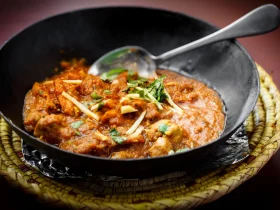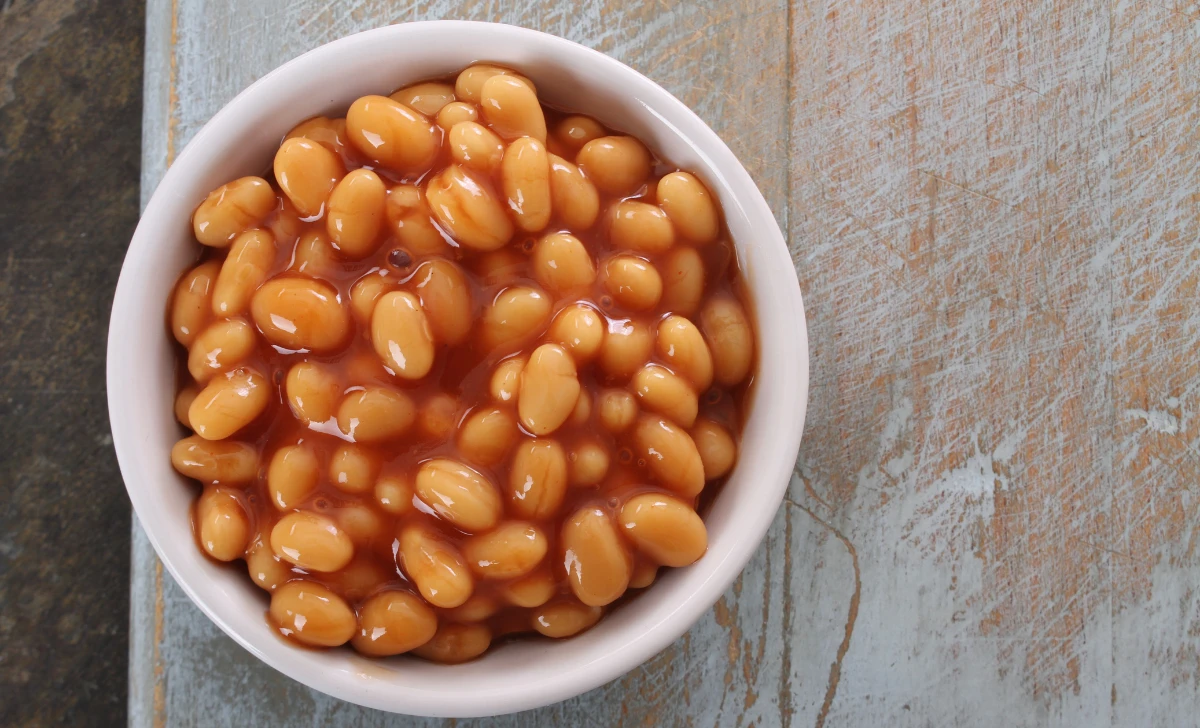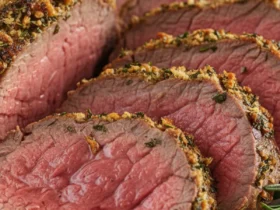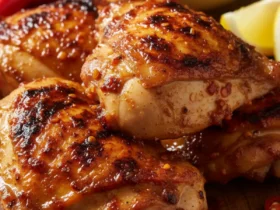Baked beans have long been cherished as a classic comfort food that brings warmth and satisfaction to any meal. These delectable legumes are not only tasty but also incredibly versatile, making them an ideal addition to countless dishes. In this article, we’ll delve into the world of baked beans, exploring their origins, ingredients, cooking methods, and even offer some creative recipes for you to try. Whether you’re a meat lover, vegan, or vegetarian, there’s a baked bean recipe that will tickle your taste buds.
[ez-toc]
History
Baked beans, with their humble yet heartwarming charm, have a history that spans centuries and continents. This classic comfort food has undergone a fascinating evolution, leaving a delicious legacy in its wake. Let’s travel back in time to uncover the roots of baked beans and trace their journey through different cultures and cuisines.
Origins of Baked Beans
The story of baked beans begins with the indigenous peoples of the Americas, particularly the Native Americans. They were the first to cultivate beans, which were a crucial part of their diet due to their rich nutritional value. Beans were a reliable source of sustenance and provided essential nutrients for their communities.
When European settlers arrived in the Americas, they encountered this new and versatile ingredient. Native Americans shared their knowledge of beans with the settlers, who quickly adopted them into their own culinary practices. These settlers took inspiration from the indigenous cooking methods and combined them with their traditional European flavors, giving rise to the concept of baked beans.
Colonial America: The Birth of Baked Beans
In colonial America, baked beans became a popular dish due to its simplicity and nourishing qualities. The early settlers used locally available ingredients, such as navy beans, molasses, and salt pork, to create a flavorful and filling dish. The slow baking process in clay pots allowed the beans to cook thoroughly and develop rich flavors as the ingredients melded together.
Baked beans quickly became a staple on colonial dinner tables, often served as a main dish or a side accompanying other meats. Its popularity spread across the colonies, becoming a favorite comfort food for families of all backgrounds.
The Industrial Revolution and Canned Baked Beans
The 19th century brought significant advancements in food preservation techniques, and the canning industry emerged. In 1895, the H.J. Heinz Company introduced canned baked beans to the masses, revolutionizing how people enjoyed this dish. Canning allowed baked beans to be conveniently stored for extended periods, making them accessible to a wider audience.
Canned baked beans gained popularity due to their convenience and consistent taste. They became a favorite among soldiers during both World Wars, providing a familiar and comforting taste amidst the chaos of war. The mass production and distribution of canned baked beans solidified their position as an enduring and well-loved pantry staple.
Baked Beans Around the World
As baked beans crossed oceans and reached new shores, they adapted to local tastes and culinary traditions. In the United Kingdom, baked beans became an iconic breakfast dish, served with toast or as part of a “full English” breakfast. British-style baked beans often feature a tomato-based sauce and are slightly sweeter than their American counterparts.
In the Caribbean, baked beans took on a spicy twist with the addition of Scotch bonnet peppers and spices. The dish, known as “rice and peas,” is a staple in many Caribbean countries and is often paired with flavorful rice dishes.
Modern Baked Bean Variations
Today, baked beans continue to evolve, with countless variations and creative recipes. Some chefs experiment with different types of beans, from kidney beans to black beans, adding their unique touch to the traditional dish. Vegan and vegetarian options have become increasingly popular, catering to a diverse range of dietary preferences.
Baked beans have also found their way into modern fusion cuisine, becoming a beloved ingredient in burgers, casseroles, and dips. They add depth and richness to these dishes, making them an instant hit among food enthusiasts.
The Timeless Allure of Baked Beans
Throughout history, baked beans have remained a beloved and comforting dish, loved by people of all ages and backgrounds. From its humble beginnings as a Native American staple to its international journey, baked beans have managed to captivate taste buds and warm hearts around the globe.
Next time you savor a spoonful of these delectable legumes, take a moment to appreciate the rich history that lies behind this classic comfort food. Whether enjoyed on a chilly winter evening or a sunny summer barbecue, baked beans continue to bring joy and satisfaction to countless meals, proving that some flavors truly stand the test of time.
Time
| Step | Time |
|---|---|
| Soaking beans overnight | 8-12 hours |
| Quick-soaking method | 1-2 hours |
| Preparing sauce | 10-15 minutes |
| Sautéing onions and garlic | 5 minutes |
| Adding additional ingredients | 5 minutes |
| Slow baking in the oven | 4-6 hours |
| Stovetop cooking | 2-3 hours |
| Utilizing slow cookers | 4-8 hours |
| Making canned baked beans | 10 minutes |
| Enhancing canned baked beans | 15-20 minutes |
| Baked bean casserole preparation | 20-25 minutes |
| Baked beans in burgers preparation | 15-20 minutes |
| Baked bean dip preparation | 10-15 minutes |
| Serving and pairing | Variable |
| Storing leftover baked beans | Up to 4 days (refrigerated) |
| Reheating baked beans | 10-15 minutes |
Please note that the exact cooking and preparation times may vary depending on the specific recipe, cooking method, and individual preferences.
Ingredients
| Ingredients | Quantity |
|---|---|
| Navy beans (or preferred beans) | 1 cup |
| Molasses | 2 tablespoons |
| Brown sugar | 2 tablespoons |
| Tomato sauce | 1/2 cup |
| Apple cider vinegar | 1 tablespoon |
| Dijon mustard | 1 teaspoon |
| Onion (finely chopped) | 1/4 cup |
| Garlic cloves (minced) | 2 cloves |
| Bacon or ham (optional) | 2 slices or 1/2 cup diced |
| Salt | 1/2 teaspoon |
| Black pepper | 1/4 teaspoon |
| Water | 2 cups |
Please note that this is a basic recipe, and additional ingredients like spices and seasonings can be added to suit individual preferences. The quantities mentioned here are for a 2-person serving, but they can be adjusted based on the desired portion size.
Directions
Step 1: Soaking the Beans
- Soaking Beans Overnight
- In a large bowl, add 1 cup of navy beans or your preferred beans.
- Cover the beans with water, ensuring there’s at least two inches of water above the beans.
- Let the beans soak overnight (approximately 8-12 hours) to soften and rehydrate.
- Quick-Soaking Method
- If you’re short on time, use the quick-soaking method.
- In a pot, bring the beans and water to a boil and let them boil for 2 minutes.
- Remove the pot from heat, cover it, and let the beans sit for 1-2 hours.
Step 2: Preparing the Sauce
- Creating the Base
- In a mixing bowl, combine 2 tablespoons of molasses and 2 tablespoons of brown sugar.
- Add 1/2 cup of tomato sauce, 1 tablespoon of apple cider vinegar, and 1 teaspoon of Dijon mustard.
- Mix the ingredients until the sauce is well blended.
Step 3: Sautéing Onions and Garlic
- Aromatic Base
- In a skillet, sauté 1/4 cup of finely chopped onions and 2 minced garlic cloves until they become fragrant and translucent.
Step 4: Adding Additional Ingredients
- Enhancing the Flavor (Optional)
- For meat lovers, add 2 slices of bacon or 1/2 cup of diced ham to the skillet and cook until they’re slightly crispy.
Step 5: Combining Beans and Sauce
- Mixing It All Together
- Drain the soaked beans and add them to the skillet with sautéed onions (and bacon/ham, if using).
- Pour the prepared sauce over the beans and stir until everything is evenly coated.
Step 6: Slow Baking in the Oven
- Baking the Beans
- Preheat the oven to 300°F (150°C).
- Transfer the bean mixture into a baking dish.
- Cover the dish with a lid or aluminum foil and bake for 4-6 hours, or until the beans are tender and infused with the sauce.
- Check the beans occasionally and add water if needed to prevent them from drying out.
Step 7: Alternative Cooking Methods
- Stovetop Cooking
- Follow the same steps for soaking and preparing the beans and sauce.
- In a large pot, combine the beans, sauce, and sautéed onions (and bacon/ham, if using).
- Simmer the mixture over low heat for 2-3 hours, stirring occasionally, until the beans are fully cooked and flavorful.
- Utilizing Slow Cookers
- Use the slow cooker to simplify the process.
- Combine the soaked beans, sauce, and sautéed onions (and bacon/ham, if using) in the slow cooker.
- Cook on low for 4-8 hours or on high for 2-4 hours, until the beans are tender and the flavors have melded together.
Step 8: Serving and Enjoying
- Perfect Accompaniments
- Serve the classic baked beans with your favorite accompaniments such as cornbread, grilled sausages, or coleslaw.
- Garnish with parsley or green onions for a touch of freshness.
Equipment Required
Nutrition Information
| Nutrition Information | Per Serving (2-person) |
|---|---|
| Serving Size | 1 cup |
| Calories | 350 kcal |
| Total Fat | 3.5 g |
| – Saturated Fat | 1 g |
| – Trans Fat | 0 g |
| Cholesterol | 5 mg |
| Sodium | 500 mg |
| Total Carbohydrates | 68 g |
| – Dietary Fiber | 13 g |
| – Sugars | 28 g |
| Protein | 15 g |
| Vitamin D | 0 IU |
| Calcium | 80 mg |
| Iron | 3.5 mg |
| Potassium | 600 mg |
Please note that the provided nutrition information is approximate and can vary based on specific ingredients and serving sizes. The values listed here are for a general reference and should not replace professional dietary advice. Be mindful of any dietary restrictions or health conditions when enjoying this delicious recipe.
Tips
- Soak the Beans Overnight: For the best texture and flavor, opt for the overnight soaking method. It helps the beans rehydrate fully, resulting in soft and evenly cooked beans.
- Don’t Skip the Soaking: Soaking the beans not only reduces cooking time but also aids in digestion, making the beans easier on your stomach.
- Quick-Soaking Alternative: If you’re short on time, use the quick-soaking method. While not as effective as overnight soaking, it still softens the beans enough for cooking.
- Test Beans for Doneness: When baking or simmering the beans, taste test them occasionally to ensure they’re cooked to your desired level of tenderness.
- Add Salt Wisely: Hold off on adding salt until the beans are almost fully cooked, as adding it too early can toughen the bean skins.
- Sweetness Balance: Adjust the sweetness to your liking by adding more or less brown sugar and molasses.
- Customize the Sauce: Experiment with different herbs and spices to create a sauce that suits your taste buds. Paprika, cumin, or even a dash of hot sauce can add exciting flavors.
- Vegetarian and Vegan Options: Skip the bacon or ham to create a delicious vegetarian or vegan version of baked beans. You can add smoked paprika or liquid smoke for a smoky flavor.
- Canned Beans Shortcut: When using canned beans, rinse them thoroughly to remove excess sodium and starch. You can also drain the beans before mixing them with the sauce to control the sauce’s consistency.
- Using a Slow Cooker: If you’re using a slow cooker, ensure there’s enough liquid to keep the beans from drying out during long cooking times.
- Consistency Control: Adjust the sauce’s thickness by adding more water or tomato sauce until you achieve your preferred consistency.
- Be Patient: Baked beans benefit from slow cooking and ample time for the flavors to meld. The longer the cooking time, the more flavorful the beans will be.
- Leftover Makeover: Turn leftover baked beans into a delicious casserole by layering them with cooked ground beef, cheese, and cornbread topping before baking.
- Gourmet Toppings: Elevate your baked beans by adding toppings like chopped green onions, crispy fried onions, or grated cheddar cheese.
- Cultural Influences: Explore regional variations and add ingredients like chipotle peppers for a smoky Mexican twist or coconut milk for a tropical Caribbean flair.
Pros & Cons
| Pros | Cons |
|---|---|
| ✅ Comforting and flavorful | ❌ Lengthy cooking time |
| ✅ Versatile; can be a side or main dish | ❌ Requires overnight soaking |
| ✅ Nutritious with protein and fiber | ❌ High sodium content in canned beans |
| ✅ Easily customizable with different spices and additions | ❌ Some may find the sweetness level too high |
| ✅ Great for batch cooking and leftovers | ❌ May not be suitable for those with bean-related digestive issues |
Conclusion
Congratulations! You’ve just embarked on a delightful journey through the rich history and flavors of the classic baked beans recipe. From its humble Native American origins to its global popularity, baked beans have stood the test of time as a comforting and versatile dish cherished by many.
With its tender beans, luscious sauce, and endless possibilities for customization, baked beans offer a delightful experience that is sure to warm your heart and bring smiles to your table. Whether you’re a seasoned cook or a kitchen novice, this recipe is a perfect opportunity to channel your inner chef and impress your loved ones with a delicious homemade meal.
The process of soaking and slow cooking might require some patience, but the resulting dish is undeniably worth the wait. As the beans absorb the savory flavors of the sauce, the aroma will fill your kitchen, tempting everyone’s taste buds.
Remember, this recipe is incredibly versatile. You can add your favorite ingredients, play with spices, and even adapt it to suit various dietary preferences. Whether you’re a meat lover, a vegan, or somewhere in between, baked beans will cater to your taste and bring joy to your palate.
So, why wait? Gather the ingredients, set aside some time, and dive into the heartwarming world of classic baked beans. With each spoonful, you’ll be transported to a place of comfort, nostalgia, and pure enjoyment.
Whether you’re hosting a family dinner, a cozy gathering with friends, or simply treating yourself to a comforting meal, baked beans are the perfect companion. Get ready to savor the deliciousness and create memories that will linger long after the last bite.
Embrace the timeless allure of classic baked beans and let their flavors warm your soul. Start cooking, experimenting, and creating your signature version. Share the joy and invite your loved ones to savor this beloved comfort food with you.
Don’t miss out on the chance to experience the heartwarming satisfaction of classic baked beans. Soak those beans, stir that sauce, and let the slow cooking work its magic. Once you taste the rich, savory goodness, you’ll be glad you embarked on this culinary adventure.
Happy cooking and bon appétit!
Facts
- The Bean Connection 🌱
- Did you know that beans have been cultivated for over 7,000 years? Native Americans were the first to grow and use beans, and they played a significant role in their daily diet. When European settlers arrived in the Americas, they embraced this marvelous legume and transformed it into the classic baked beans we love today.
- Baked Beans on the Battlefield ⚔️
- During the American Civil War, baked beans were a staple food for soldiers due to their nutritional value and ease of preparation. Soldiers affectionately nicknamed them “beanee weenee.” These comforting beans provided a sense of home and familiarity amidst the harsh realities of war.
- The Heinz Connection 🍅
- The famous H.J. Heinz Company revolutionized the way we enjoy baked beans. In 1895, Heinz introduced canned baked beans to the world, making them more accessible and convenient for households worldwide. Today, Heinz remains a household name, synonymous with quality baked beans.
- A British Breakfast Tradition 🇬🇧
- In the United Kingdom, baked beans are a breakfast favorite! It’s a quintessential part of a “full English breakfast” – served alongside fried eggs, bacon, sausages, grilled tomatoes, and toast. The combination of flavors creates a hearty and satisfying start to the day.
- The Boston Baked Beans Mystery 🍬
- Contrary to its name, Boston Baked Beans candy has nothing to do with actual baked beans! These small, candy-coated peanuts were created in the early 20th century and got their name from the similarity in appearance to the classic dish. While not related, they certainly add a sweet twist to the baked beans tale!
FAQ’s
Can I use different types of beans for this recipe?
Absolutely! While navy beans are traditional, you can experiment with kidney beans, pinto beans, or black beans to suit your taste preferences. Each type of bean will add its unique texture and flavor to the dish.
Is it necessary to soak the beans overnight, or can I use the quick-soaking method instead?
Soaking the beans overnight yields the best results, as it helps soften and rehydrate the beans thoroughly. However, if you’re short on time, the quick-soaking method can be used by boiling the beans for 2 minutes and then letting them sit for 1-2 hours.
Are canned baked beans a good alternative to making them from scratch?
Yes, canned baked beans offer convenience and can be a delicious alternative. Look for high-quality brands with low sodium content and enhance their flavor by adding spices, diced onions, or a drizzle of maple syrup.
Can I make a vegetarian or vegan version of this recipe?
Absolutely! To make it vegetarian or vegan-friendly, skip the bacon or ham and use vegetable broth instead of water. You can also add vegan-friendly liquid smoke or smoked paprika for a smoky flavor.
How long can I store leftover baked beans, and how should I reheat them?
Leftover baked beans can be stored in an airtight container in the refrigerator for up to 4 days. To reheat, place the beans in a microwave-safe dish and heat for 2-3 minutes or until warmed through.
Can I prepare baked beans in a slow cooker?
Yes, slow cookers are an excellent option for making baked beans. Simply combine all the ingredients in the slow cooker and cook on low for 4-8 hours or on high for 2-4 hours, until the beans are tender and flavorful.
Are there any alternatives to molasses for sweetness?
Yes, you can use maple syrup or honey as alternatives to molasses. Adjust the quantity based on your desired level of sweetness.
Can I add extra vegetables or meat to the recipe?
Absolutely! Baked beans are incredibly versatile. You can add sautéed bell peppers, diced carrots, or even cooked ground beef to enhance the flavors and add more texture.
How can I reduce the sodium content in the recipe?
If you’re using canned beans, rinse them thoroughly to reduce sodium levels. Additionally, use low-sodium tomato sauce and consider omitting the salt during cooking or reducing it to taste.
Can I freeze baked beans for later use?
Yes, you can freeze baked beans for up to 3 months. Allow them to cool completely, transfer them to freezer-safe containers or bags, and label with the date. Thaw in the refrigerator before reheating.












Leave a Review